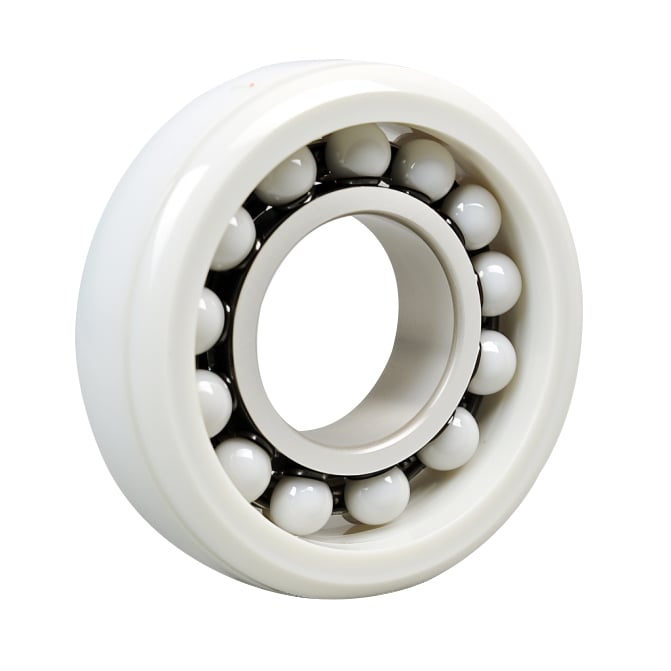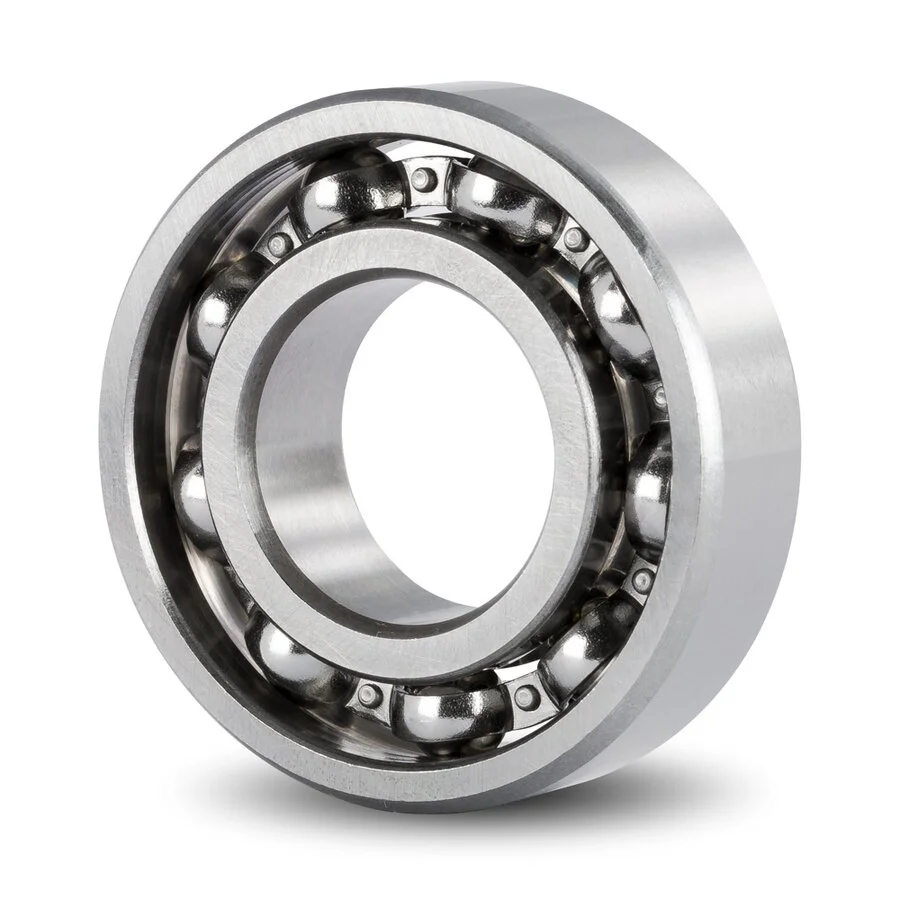Ceramic Bearings Vs Steel
Bearings are the unsung heroes of modern industry, ensuring the smooth operation of machinery in sectors ranging from aerospace to manufacturing. Among the plethora of bearing types, ceramic and steel variants have been gaining prominence. Steel bearings have long been the standard, appreciated for their reliability, while ceramic bearings are emerging as notable contenders due to their unique benefits.
In this blog, we'll dive into the world of ceramic and steel bearings, comparing their properties, performance, and ideal applications. Our aim is to elucidate the ceramic bearings vs steel debate, equipping you with the insights to make well-informed decisions for your specific needs. Join us on this enlightening exploration.
Ceramic Bearings: Advantages and Benefits
Based on the material composition, ceramic bearings can be categorized into silicon nitride, zirconia, and silicon carbide variants. These bearings offer distinct advantages, such as:
- Heat Resistance: Ceramic bearings excel in high-temperature environments, maintaining structural integrity and performance.
- Corrosion Resistance: Inherently inert, these bearings resist a broad spectrum of corrosive agents, prolonging their lifespan in challenging conditions.
- Low Friction: Their low friction coefficient enhances efficiency, reducing energy losses and promoting extended bearing life.
- Lightweight: Being considerably lighter than steel bearings, ceramic ones contribute to reduced energy consumption in high-speed applications.

Steel Bearings: Strengths and Benefits
Steel bearings, predominantly crafted from chrome steel , bring a blend of durability and versatility:
- Durability: Recognized for their long-lasting performance, steel bearings are known to withstand considerable wear over extended periods.
- Availability and Affordability: With a longstanding history in industry, steel bearings are widely available and economically priced, making them a go-to choice for numerous applications.
- Load-Carrying Capacity: Especially vital in heavy-duty machinery, these bearings are valued for their robust load-bearing prowess.

Performance Comparison
In evaluating the performance of ceramic and steel bearings, several critical factors come to the forefront, each contributing to the functional capabilities of these components:
- Friction and Wear: Ceramic bearings stand out due to their low friction coefficient. This reduced friction inherently diminishes wear, boosting the bearing's operational lifespan. Such characteristics not only enhance efficiency but also reduce heat generation, especially beneficial in high-speed applications.
- Heat Resistance and Thermal Properties: While ceramic bearings are often hailed for their heat resistance, steel bearings present a commendable thermal performance. Steel bearings can dissipate heat effectively, though they might not handle extreme temperatures as adeptly as their ceramic counterparts.
- Load Capacity in Varied Conditions: Steel bearings typically demonstrate superior load-bearing capacity, especially under heavy-duty operations. However, ceramic bearings, though sometimes presenting a lower load capacity, can maintain their structural integrity in more extreme and variable conditions.
- Operational Efficiency, Speed, and Vibration: The factors affecting these parameters are multifaceted. Ceramic bearings, with their reduced friction, often excel in high-speed scenarios and exhibit lower vibrations due to their smoother finish. Steel bearings, while efficient, may not match ceramic in ultra-high-speed settings but are versatile and reliable across a broad spectrum of applications.
Maintenance and Longevity
Ceramic Bearings
- Minimal upkeep due to low wear rates.
- Use appropriate bearing lubricants for longevity.
Steel Bearings
- Require regular lubrication and inspections.
- Protective seals enhance lifespan by warding off contaminants.
Lifespan Comparison
- Ceramic Bearings: Excel in high-speed, corrosive, or hot conditions.
- Steel Bearings: Robust and long-lasting, especially in high-load applications.
Both types offer considerable longevity, with ceramics often having an edge in extreme conditions, while steel shines in load-bearing scenarios.
Cost Analysis
In the realm of bearings, the decision between ceramic and steel often boils down to a balance of initial investment and long-term value. It's essential to weigh the immediate costs against the potential benefits over time to make an informed choice.
Initial Investment
- Ceramic Bearings: Higher initial cost due to advanced materials.
- Steel Bearings: More affordable upfront, suitable for standard applications.
Long-Term Value
- Ceramic Bearings: Despite a higher initial price, their durability can mean fewer replacements, leading to potential long-term savings.
- Steel Bearings: Lower upfront cost, but may have increased maintenance in challenging environments.
Performance ROI
When balancing cost and performance, ceramic bearings might offer greater value in high-demand scenarios, while steel bearings can be more cost-effective where advanced features aren’t critical.
Choosing the right bearing involves more than just upfront cost considerations; it requires a holistic view of performance, lifespan, and long-term return on investment.
When to Choose Ceramic Bearings Vs Steel Bearings
Ceramic Bearings
- High-Speed Applications: Ceramic bearings are ideal for high-speed applications due to their lower friction coefficient and reduced heat generation.
- Extreme Conditions: They excel in extreme temperature, high-pressure, and harsh chemical environments due to their excellent heat and corrosion resistance.
- Performance Critical: When performance and efficiency are crucial, such as in precision machinery or high-performance racing vehicles.
- Weight-Sensitive Applications: Ceramic bearings are lightweight, making them suitable for applications where weight reduction is important.
- Low Vibrations: Their lower density and smoother surface finish lead to reduced vibrations, making them suitable for precision instruments and sensitive machinery.

Steel Bearings
- General Industrial Use: Steel bearings are versatile and suitable for a wide range of industrial applications.
- High Load Capacity: In situations requiring high load-bearing capacity, steel bearings are preferred due to their robustness.
- Cost Considerations: Steel bearings are more cost-effective than ceramic ones, making them suitable for budget-conscious projects.
- Moderate Speeds: They perform well in applications with moderate speeds and temperatures.
- Everyday Machinery: For regular machinery and equipment where extreme conditions are not a concern, steel bearings are commonly used.
Conclusion
In the grand debate of ceramic bearings vs steel, each has its unique strengths and ideal applications. Please refer to the summary table below for a concise overview.
|
Aspect |
Ceramic Bearings |
Steel Bearings |
|
Material Composition |
Ceramic (e.g. silicon nitride) |
Steel (e.g. chrome steel) |
|
Heat Resistance |
High |
Moderate to High |
|
Corrosion Resistance |
Excellent |
Moderate |
|
Friction Coefficient |
Low |
Moderate |
|
Weight |
Lightweight |
Heavy |
|
Durability |
Very High |
High |
|
Load Capacity |
Lower in some cases |
High |
|
Speed |
High |
Moderate to High |
|
Vibrations |
Low |
Moderate to Low |
|
Cost |
Higher initial cost |
Affordable |
|
Applications |
High-speed, extreme conditions |
General industrial use |
At LILY Bearing, we offer both full ceramic bearings and hybrid ceramic bearings. Like our steel bearings, our ceramic bearings are also designed in a variety of ways to meet various needs of customers, such as:
Ceramic Angular Contact Ball Bearings
Ceramic Self Aligning Ball Bearings
Ceramic Tapered Roller Bearings
Ceramic Cylindrical Roller Bearings
Additionally, we offer premium ceramic components like ceramic balls to cater to varied customer requirements. Dive in and discover Lily-Bearing's high-quality ceramic bearings to make an informed choice for optimal performance.
Keep Learning








